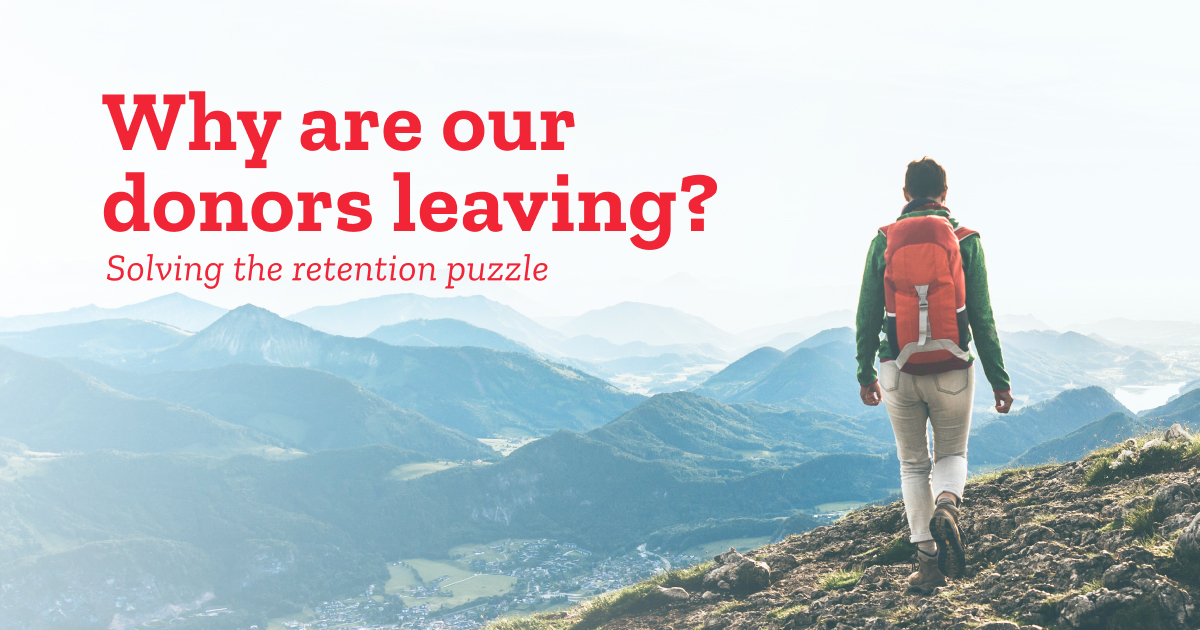Abby Shue
Vice President
Why focus on retaining your current donors? The case is clear. The cost to keep a donor is (or should be) far less than that to acquire a brand-new supporter. Higher retention rates have an immediate impact on your bottom line. And repeat donors are the perfect candidates to become major donors.
And yet—across the nation, donor retention rates continue to fall. Industry-wide, 70% of new donors will not make a gift the following year1.
If a donor believes in your cause enough to make a gift in the first place, how can you keep them coming back?

First and foremost: communicate with your donors.
Does this seem obvious? You’d be surprised.
In a recent study, an organization made gifts ranging from $1,000 to $5,000 to 37 different nonprofits. They monitored all correspondence for 90 days. What did they find? 9% of organizations did not communicate at all. Another 40% did…but only in the first month. In other words, half of all nonprofits did not maintain ongoing communication with a strong mid-level donor prospect.
Build a communications plan for your organization that ensures you are being prompt, consistent, and leveraging multiple channels.

Don’t just talk at your donors—offer opportunities for them to feel heard.
Build a two-way relationship. When donors have the chance to offer input, their sense of investment grows. As part of welcoming new donors, consider asking them a few basic questions—using a survey tool to understand their interests, motivations for giving, and commitment to your cause. The insight you gain will help you to learn more about them and communicate with them more effectively, too.

Show your donors you know them.
Not all donors are the same, nor should they be treated as such. It’s important that you’re engaging first-time donors differently than loyal donors, for example—or perhaps offering a donor who made a gift online a different option for renewing their gift than you might offer a donor who wrote a check to a direct mail campaign. Use what you know about your donors to develop segments—and develop discrete communication strategies for each segment.

Make giving easy.
Once you’ve done the work of getting to know your donors, engaging them in your work and inspiring them to give again, you want to make sure it’s easy to give to your nonprofit across all platforms. Review your website: how many clicks does it take to get to a page where you can make a gift? How much mental effort—and information—is required to give? Simplify and streamline where you can.

Measure.
As Peter Drucker says, “What gets measured gets managed.” Assess your historical donor retention data and trends. Establish a small number of core metrics: overall retention rate, first-year retention rate, second-year retention, number of personally thanked donors, etc. Each should have a baseline (where you are today) and a target (your goal). Put it in a dashboard and review it regularly.
Having a donor retention plan that is data-driven, strategic, and backed by compelling stories and content will position your organization to retain your donors and position you to acquire new donors.





